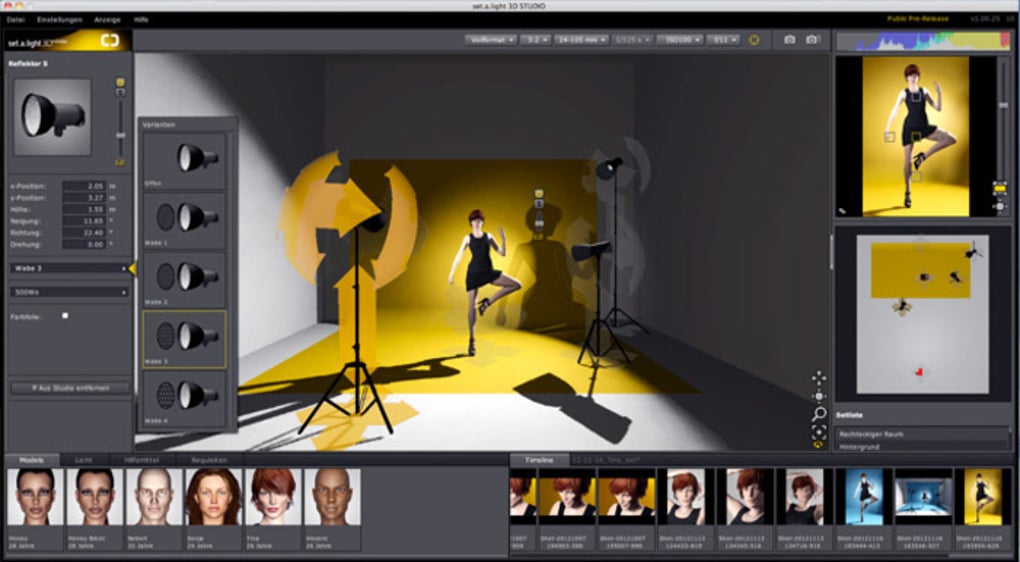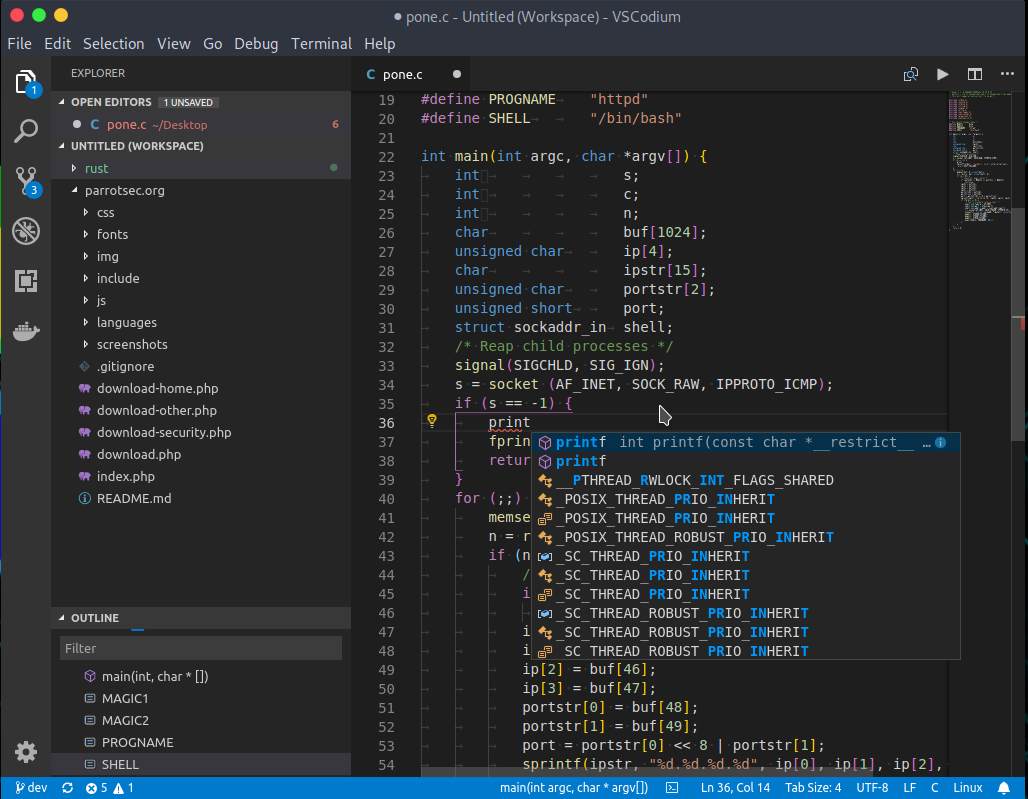3d Virtual Studio Software For Mac Os
3d virtual sets free virtual news studio background red and blue HD. VIRTUAL SET June 26, 2015. Vizrt software Virtual Set Designer realtime graphics virtual set free animated virtual set virtual studio set motion graphics virtual studio software Virtual Set Chromakeyer. Virtual Studio After Effects Template, TV Studio DS94. Built for Mac. Cheetah3D is a powerful and easy to learn 3D modeling, rendering and animation software which was developed from the ground up for Mac. So jump right into the world of computer generated imaging, create 3D artwork for your next iPhone game or make your first animated character. Shop By Category Shop By Category Studio & Recording Shop By Category Studio & Recording Audio Interfaces Microphones Studio Monitors Studio Mixers & Control Surfaces Preamps & Ch. 3DVista offers software that lets you create panoramic images, professional virtual tours and 360-degree videos. With over 18 years of experience, 3DVista is the trusted partner of realtors, photographers and corporations in over 70 countries. Compatible with any camera (DSLR, Ricoh Theta, Samsung Gear 360 etc.) and VR headsets (Samsung Gear VR, Oculus Rift, Cardboard etc.).
The Intel® RealSense™ SDK has been discontinued. No ongoing support or updates will be available.
Introduction
Intel® RealSense™ technology is becoming popular with developers, and along with the buzz comes numerous (and inevitable) questions regarding its functionalities. One of the most-asked questions is how to get the Intel® RealSense™ SDK running on a Mac*. The following step-by-step guide shows you how to run the SDK sample apps with an Intel® RealSense™ camera on a Mac through Boot Camp*.
Running an Intel® RealSense™ SDK Sample on a Macbook Air* through Boot Camp*
Getting Started

First, you’ll need the following:
- Mac OS X* Yosemite
- Apple Boot Camp 5.1.4 or later, which comes with your Mac install
- Intel RealSense Camera (F200) and/or Intel RealSense Camera (R200)
- Intel RealSense SDK (note that registration will be required to download the SDK)
- 6GB+ USB drive for Windows* startup
- Microsoft Windows 8.1 OS 64-bit Desktop Mode ISO image
- Microsoft Media Feature Pack
- Microsoft Visual Studio* 2010-2013 with service pack 1 or newer
- USB3 Port
To determine if you have a 4th generation Intel® Core™ processor (code name Haswell) or later system, open Terminal and type the following command:
That should return something that looks like this:
Intel(R) Core(TM) i5-5257U CPU @ 2.70GHz
If you’re not familiar with the Intel processor naming system, look at the 4-digit number after the i3/i5/i7. If the first digit (the “thousand’s place”) is a 4 or higher, then you are good to go. Also, to see the list of all the 4th generation and 5th generation processors, click the appropriate link.
Intel® RealSense™ Camera F200
Canon mp620 scanner software mac. With a five-cartridge system, PIXMA inks for the overall expense are somewhat more than those utilizing four cartridges, such as the HP Officejet Pro, yet the regular production per Web page created as high as 18 cents is still sensible. The image attracts attention with crisp information and also great colors.
Installing Windows Through Boot Camp
Use Cmd+space or click the top right-hand corner magnifying glass on the desktop to launch Spotlight* and plainly search “Boot Camp”. “Boot Camp Assistant” should subsequently appear.
Finding Boot Camp* Assistant through Spotlight*
The Boot Camp Assistant will transfer the Windows installation files from either an ISO file or a USB drive. At this point, Windows will install itself onto your Mac via the USB drive, along with the latest Windows drivers. The application will conveniently guide you through the course of resizing your Mac device’s current system partition and producing a Windows partition.
Installing Windows* through Boot Camp* Assistant
To begin, select the tasks you want to perform. It is recommended you leave all these options checked. However, if you already have a Boot Camp USB drive or have already partitioned your Mac, feel free to uncheck these options to speed the process up. This scenario is usually used by those who plan to install Windows on more than one Mac and have already made a USB drive.
Selecting tasks to perform on Boot Camp* Assistant
Next, point your Mac at the ISO file or USB drive. Insert a USB flash drive and select it. Please keep in mind that this drive will be deleted, so you should take precautions and back up valuable files.
Your Mac will now create the proper Windows installer drive; you should see the notification that reads “Copying Windows files.” Depending on your drive’s rate of speed, this process may take quite a while. It is common for the progress bar to periodically appear stagnant and unmoving; please be patient when this occurs.
Copying Windows* files to USB drive
When the process is complete and your Mac has successfully completed the creation of a USB installation drive, you will come across the “Create a Partition” screen. At this point, you may split your Mac system drive into two parts: one partition for Mac OS X and another for Windows. You can determine how much space to allot to your Windows system and OS X system—32GB or more is recommended for your Windows partition. If you have several hard disks on your Mac, you may choose to dedicate one specifically to Windows.
Unfortunately, Boot Camp Assistant will not be able to resize your partitions after the completion of this process; you will need to use a third-party tool to do so.
Partitioning Windows* drive
Windows will now complete the installation process. Afterwards, the Boot Camp installer will appear and install all appropriate Windows system hardware drivers and utilities.
When the Boot Camp installer completes its tasks, you can remove the USB drive. If you do not plan to perform the installation process on another Mac, you are done with your USB drive.
NTFS error
Since Boot Camp formats the Windows drive to FAT32 partition and Windows 8.1 only supports NTFS partition, you will probably receive the following error during installation:
3d Virtual Studio Software For Mac Os Download
“Windows cannot be installed to this hard disk space. Windows must be installed to a partition formatted as NTFS.”
Make sure you select the “BOOTCAMP” partition. You should have a “format” option to click that will reformat the drive to NTFS so that you may continue the Windows installation process.

Installing the Intel® RealSense™ SDK on Boot Camp
You’ll notice that the process of installing the Intel RealSense SDK onto Boot Camp is the same as the usual Windows installation process.
Step 1: Plug your Intel RealSense Camera into one of the USB3 ports on your Mac.
Step 2: Follow the instructions on the Intel RealSense SDK download page to install the Intel® RealSense™ Depth Camera Manager (DCM), which includes the Camera Virtual Driver and Depth Camera Manager Service, and then the SDK.
Plugging the F200 camera into the USB3 port on the Macbook*
Step 3: Depending on the version of Windows 8.1, Media Feature Pack may not be included. Simply download it and continue the installation if needed. Media Feature Pack is required for the installation of the Intel RealSense SDK.
Step 4: When the SDK is installed, try running the Samples Apps. You can find them in a desktop icon folder called “Intel RealSense SDK 2014.” The directory’s name is C:Program Files (x86)IntelRSSDKsample if the SDK is installed in the default location.
Running the SDK Sample on Macbook Air*
Step 5: Code samples can be modified and used through Visual Studio.
And there you have it! Intel RealSense technology is officially running on your Mac.
That’s a Wrap
As you have gathered by now, the steps needed to successfully run Intel RealSense technology on a Mac are relatively straightforward and simple using the Apple Boot Camp application.
You can use other virtual machine tools such as Parallels, VMWare Fusion*, and Virtual Box, but the USB3’s simulation isn’t the same as running OS natively. Simply put, the installation can be still accomplished, but the camera will fail to load up.
About the Author
Peter Ma has over 14 years of experience developing web, mobile, and IoT applications. His experience includes database, web back-end, web front-end, mobile (Android* and iOS*), and IoT development. He is an Intel® Software Innovator who has developed several demos through the application of Intel® technologies. Currently, Peter is a Rapid Prototype Specialist, consulting for both large corporations and startups. He attends many hackathons in his spare time and often wins!